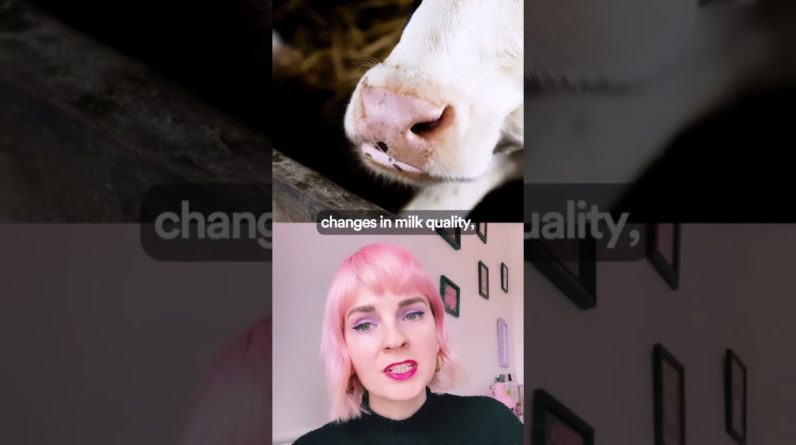I have always been intrigued by the fascinating process of cheese-making. It is an art that has been perfected over centuries, resulting in a diverse array of flavors and textures that tantalize our taste buds. Today, I want to delve into this age-old craft and explore the world of cheese through the expert lens of George Monbiot. Join me as I discover the secrets behind the creation of this beloved dairy product and gain a newfound appreciation for the skill and knowledge required to produce heavenly slices of cheese. So, come along and let’s embark on this cheesy adventure together!
Table of Contents
George Monbiot: How Is Cheese Made?
Introduction
Cheese, oh glorious cheese! It’s a beloved dairy product that has been enjoyed by people all over the world for centuries. But have you ever wondered how this delectable treat is made? Well, wonder no more, because in this article, I will take you on a journey through the fascinating process of cheese-making.
The Process Involves Using Milk and Bacterial Culture
To begin, let’s talk about the two main ingredients used in cheese-making: milk and bacterial culture. The type of milk used can vary depending on the desired flavor and texture of the cheese. Cow’s milk is the most commonly used, but goat’s milk, sheep’s milk, and even buffalo milk can also be utilized.
In addition to milk, a bacterial culture is introduced to kickstart the fermentation process. This culture consists of specific strains of bacteria that convert the lactose in the milk into lactic acid. These bacteria help develop the unique flavors and characteristics of each cheese variety.
Rennet Is Added to Coagulate the Milk
Once the milk and bacterial culture are combined, rennet is added to coagulate the milk. Rennet is an enzyme derived from the stomach lining of young ruminant animals like cows and sheep. It acts as a catalyst, causing the milk to thicken and form curds.
The Curds Are Then Cut and Heated
After the milk has coagulated, the curds are cut into small pieces to release the whey. The size of the curd cut can vary depending on the desired texture of the cheese. Some cheeses, like cheddar, have larger curd cuts, resulting in a crumbly texture, while others, like mozzarella, have smaller curd cuts for a smoother, stretchier texture.
Following the cutting of the curds, they are heated slowly to expel more whey and further develop the cheese’s texture. The temperature and duration of heating can vary depending on the type of cheese being made.
The Whey Is Drained, Leaving Behind the Curds
Once the desired texture has been achieved, the next step involves draining the whey from the curds. This is typically done using a cheesecloth or a perforated mold that allows the whey to escape while retaining the curds. The whey, a liquid byproduct of the cheesemaking process, contains valuable nutrients and can be used for other purposes.
The Curds Are Shaped and Pressed
After the whey is drained, the curds are shaped and pressed to remove even more moisture and create the desired shape of the cheese. The pressing process can take anywhere from a few hours to several days, depending on the type of cheese being made. This step helps to expel excess whey and consolidate the curds, resulting in a firmer texture.
Salt Is Added for Flavor and Preservation
Once the cheese has been pressed, it’s time to add salt. Salt not only enhances the flavor of the cheese but also acts as a preservative, inhibiting the growth of harmful bacteria. The amount of salt added can vary depending on personal preference and the type of cheese being produced.
The Cheese Is Aged for Different Lengths of Time
After the salt has been added, the cheese is ready for aging. Aging is a crucial step in the cheese-making process as it allows the flavors and textures to develop and mature. Some cheeses are aged for just a few weeks, while others are aged for several months or even years. The longer a cheese is aged, the sharper and more complex its flavors become.
Different Types of Cheese Have Different Flavors and Textures
Now that we’ve covered the basic cheese-making process, it’s important to note that there are countless varieties of cheese, each with its own unique flavors and textures. The variations in cheese result from different factors such as the type of milk used, the bacterial culture, the aging process, and even the regional influences. From creamy Brie to tangy Gorgonzola, there’s a cheese out there to suit every taste bud.
This Video Explains the Process in Detail
Click here to watch a detailed video on cheese-making process.
Conclusion
Cheese making is truly an art that combines science, tradition, and skill. It’s a process that has been refined and perfected over centuries, resulting in a diverse array of cheeses that delight our palates. Whether you’re a cheese connoisseur or simply a cheese lover, understanding how cheese is made adds a new layer of appreciation for this dairy delight.
FAQs After The Conclusion
- Can I make cheese at home?
- What kind of milk is best for cheese-making?
- How long does it take to make cheese?
- Are there any vegan alternatives to rennet?
- Can I age cheese at home?
Remember, cheese-making requires precision and proper hygiene to ensure food safety. It’s always a good idea to do thorough research and follow trusted recipes or seek guidance from cheese-making experts before attempting it yourself. So go ahead, explore the world of cheese-making, and enjoy the fruits of your labor. Happy cheesemaking!






